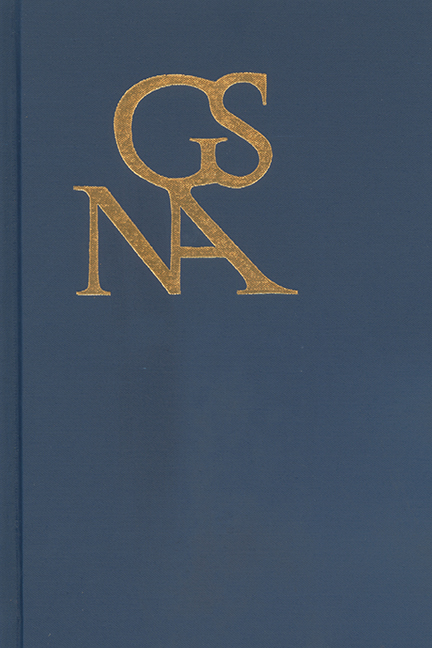Book contents
- Frontmatter
- Contents
- Building Bridges: Goethe's Fairy-Tale Aesthetics
- Goethe as Mystagogue
- Observing Neutrality, circa 1800
- Goethe, Faust, and Motherless Creations
- Impossible Ideals: Reconciling Virginity and Maternity in Goethe's Werther
- Kant, Calculus, Consciousness, and the Mathematical Infinite in Us
- The Classical Aesthetics of Schlegel's Lucinde
- Special Section on Visual Culture in the Goethezeit
- Book Reviews
Goethe, Faust, and Motherless Creations
Published online by Cambridge University Press: 25 February 2017
- Frontmatter
- Contents
- Building Bridges: Goethe's Fairy-Tale Aesthetics
- Goethe as Mystagogue
- Observing Neutrality, circa 1800
- Goethe, Faust, and Motherless Creations
- Impossible Ideals: Reconciling Virginity and Maternity in Goethe's Werther
- Kant, Calculus, Consciousness, and the Mathematical Infinite in Us
- The Classical Aesthetics of Schlegel's Lucinde
- Special Section on Visual Culture in the Goethezeit
- Book Reviews
Summary
THIS ESSAY READS the life and work of Johann Wolfgang von Goethe alongside the material culture of motherless creations—the automata and androids that his contemporaries imagined and created. Automata and androids are motherless in the sense that men create them, and they represent an attempt to usurp women's primary role in reproduction. Examining Goethe's relationship to the artificial life-forms of his period sheds light not only on the role parentage plays in Faust, a text replete with references to reproduction, but also on the author's relationship to discursive debates around what contemporaries called Erzeugung, “generation.” This contextualization of Goethe and Faust in the field of artificial life also helps to better explain the peculiar absence of mothers in eighteenth- and nineteenth-century German writing, a phenomenon that Gail Hart and Susan Gustafson investigate. In the Goethezeit, narratives of creation sometimes downplayed women's contribution to the development of the embryo; debates surged between those who believed in epigenesis, the gradual formation of the fetus, and the preformationists, who argued that viviparous animals existed preformed, either in the sperm (spermists) or in the ovum (ovists). This essay argues that Faust II reflects this interest in who contributes more to the creation of new life: the father or the mother.
The scene during which Homunculus, a motherless creation, is born satirizes the theory of preformation, if not creation itself. Scandinavian scholars have recently pointed out that Goethe's Homunculus in Faust II relates to the contemporary field of artificial life, and Jessica Riskin ties eighteenthcentury automata to the philosophical, historical origins of artificial life. In The Philosophy of Artificial Life (1996), the premier cognitive science researcher of artificial life, Margaret Boden, defines life as “self-organization, emergence, autonomy, growth, development, reproduction, evolution, adaptation, responsiveness, and metabolism.” These terms are, of course, modern; in Goethe's time, “creationism” substitutes for “evolutionism,” and “vitalism” (translated into Kraft in German) for “emergence.” Traditionally critics have relied on Goethe's Versuch die Metamorphose der Pflanzen zu erklären (Attempt to Explain the Metamorphosis of Plants, 1790) to explore his concept of generation, while his writings on morphology further establish the author's interest in the form and process of creation.
- Type
- Chapter
- Information
- Goethe Yearbook 23 , pp. 59 - 76Publisher: Boydell & BrewerPrint publication year: 2016

